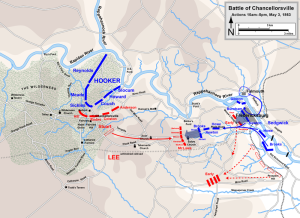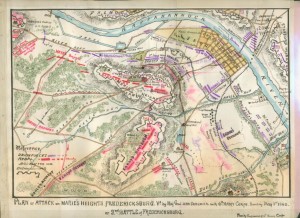
33d fought at Second Fredericksburg 5-3-1863
From a Seneca County, New York newspaper in 1863:
Letter from Capt. Edwin J. Tyler.
Casualties in Co. A, of the 33d.
CAMP 33D REG., N.Y.V., NEAR
FREDERICKSBURG, Va., May 8th 1863.
It becomes my painful duty to report for publication, for the information of those interested, an account, as near as possible, of the casualties in my Company, in the battle of the 4th inst., in rear of the heights of Fredericksburg:
1st sergeant A.B. Randolph, wounded in leg below the knee; brought off the field, but afterwards taken prisoner.
2d Sergeant William Proudfoot, besh [sic] wound in thigh; prisoner.
5th Sergeant David Lawrence, in left side, not dangerous; in hospital.
Corporal George H. Welles, shot through the body; left on the field; supposed to be dead.
Corporal Daniel A. O’Neill, in face; missing.
Corporal William F. Hecker, in ankle; not dangerous; is in hospital.
Corporal John McDonald, fell on the field, is missing.
PRIVATES.
John Proudfoot, flesh wound in thigh; in hospital.
M. Poquette, in arm below elbow, (broken) and in side slightly.
Washington Waite, through both thighs, (dangerous and prisoner.
Andrew J. Clarke, fell on the field, and missing.
Irwin P. Humphrey, in leg above the knee; in hospital.
J. Warren Hendricks, left arm amputated.
William Pow, in back, serious.
Patrick Ryan, in breast, not dangerous.
Harrison Lewis and Goorge Matzger [George Metzler], taken prisoners on the field.
Robert Jardine, Charles Whitcomb, and David P. Miller, missing, – killed or prisoners.
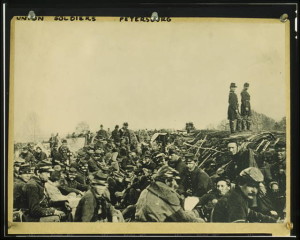
members of the sixth corps before “storming the heights”
This is the most correct statement possible to make at this time. It is with deep sorrow that I have to record such fearful fatality; for out of forty-three men that I took into the fight, until to-day I could only muster eighteen. The Company and Regiment have acted with heroic bravery, and did all that men could do. We were among the first in storming the heights on Sunday, and fought more than twice our number from sunrise until dark on Monday, and had possession of the field, and were engaged in picking up and taking care of the wounded, as well as possible in the dark, when we received the order to retreat to Banks’ Ford, being at the time almost entirely surrounded by an immensely superior force.
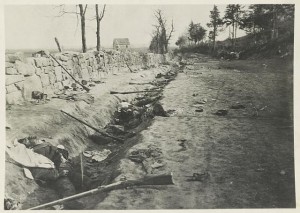
‘Stone wall below Marye’s Heights, May 3, 1863’
You will bear in mind that all the fighting at and around Fredericksburg was done by the 6th Army Corps, entirely independent of the main army. The fighting began on the night of the 28th of April, and ended on the night of May 4th, and in the whole war I have not seen displayed more desperate valor, or sturdy bravery and perseverance, than was exhibited by the glorious old 33d, as our decimated ranks but too well testify. Our flag is torn into shreds, by shot and shell, and at one time nothing but the most determined valor saved it from falling into the hands of the enemy.
The regiment went into the fight 466 strong (rank and file,) and at roll-call, after we had got back on this side of the river, there were 191; but this number will be augmented to about 250, by men slightly wounded, stragglers, &c. There were but two or three men in Company A but were hit somewhere, and there were many instances of individual bravery. Some of my men were taken prisoners, and afterwards the captured became the captors, and brought their prisoners safely into our lines.
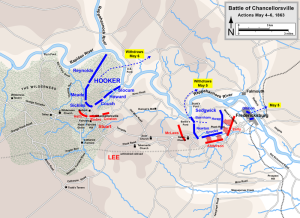
retreat over Banks’ Ford
The people of Seneca have no occasion to blush for their sons in this Regiment; they have done their whole duty from the first, and will continue to do it until the morning of the 22d of May, and then, if there are any of us left alive, we expect to be allowed to come home to visit our friends.
Respectfully yours,
E.J. TYLER,
Capt. Co. A, 33d Reg., N.Y.V.
The map of May 4-6 1863 by Hal Jespersen is licensed by Creative Commons

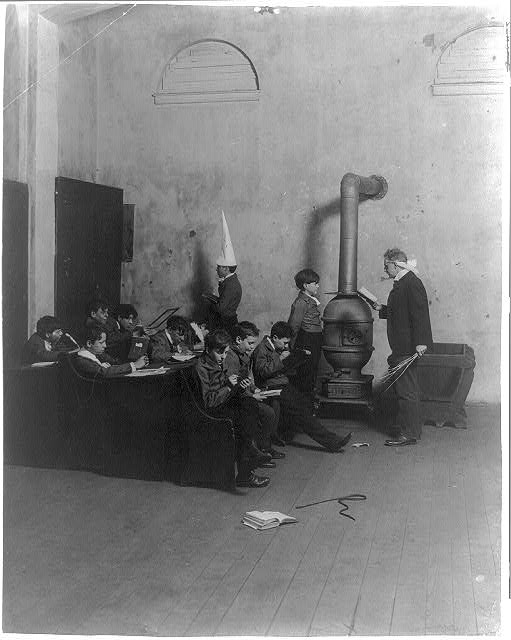
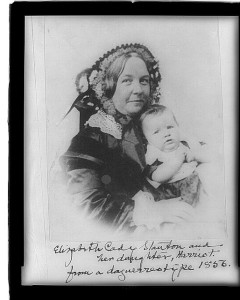
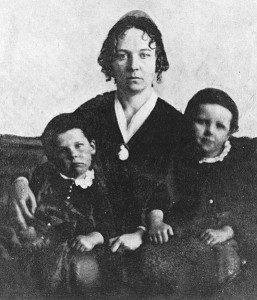
![Susan B. Anthony (Sarony & Co., photographers, 680 Broadway, N.Y. [ca. 1870]; LOC: LC-USZ62-30742)](https://www.bluegrayreview.com/wp-content/uploads/2013/05/3a52946r-213x300.jpg)
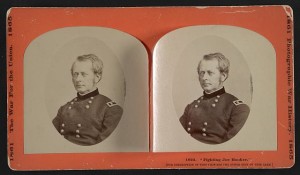
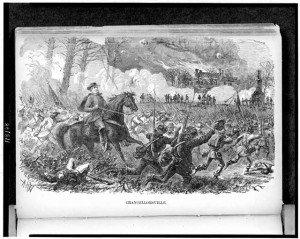
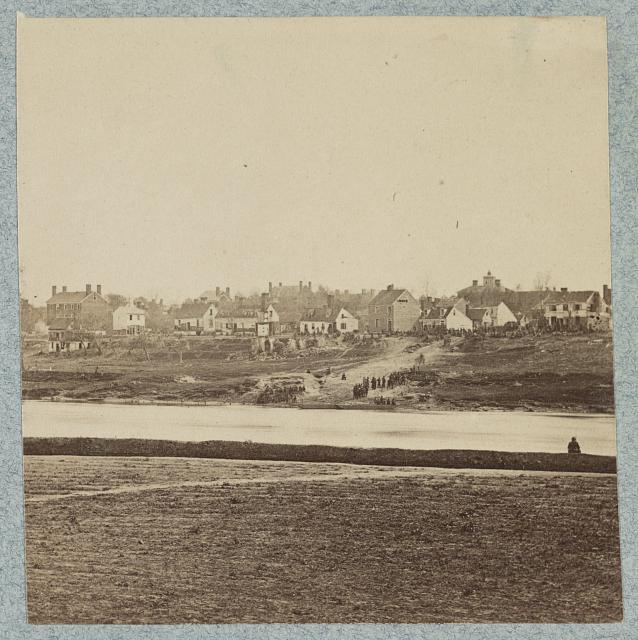
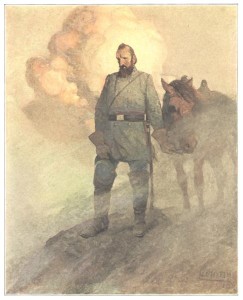
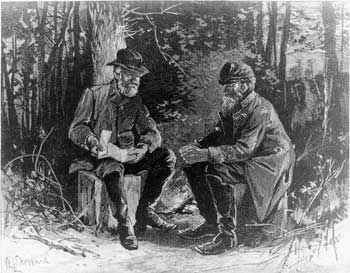
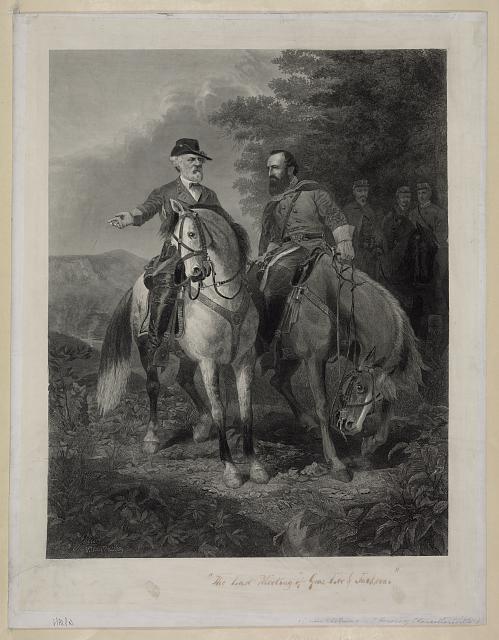
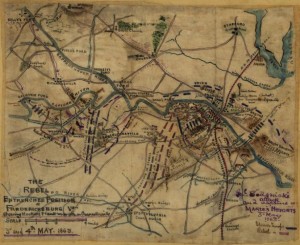




![Map shewing [sic] movements of Union and Rebel armies and Battle of Chancellorsville, Virginia from April 27th to 4th May 1863. Sneden, Robert Knox, 1832-1918. (LOC: gvhs01 vhs00300 http://hdl.loc.gov/loc.ndlpcoop/gvhs01.vhs00300)](https://www.bluegrayreview.com/wp-content/uploads/2013/05/Chancellorsville-198x300.jpg)
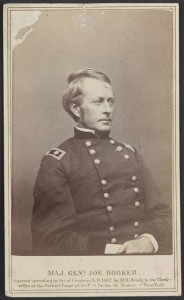
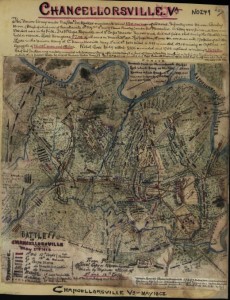
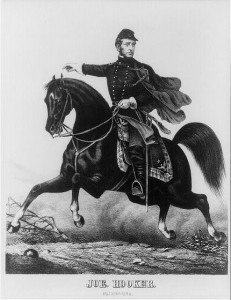
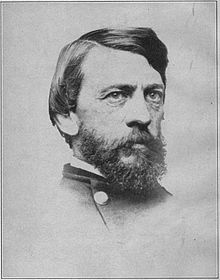
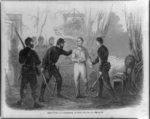
![Hon. Clement Laird Vallandigham [?] of Ohio (between 1855 and 1865; LOC: LC-DIG-cwpbh-01193)](https://www.bluegrayreview.com/wp-content/uploads/2013/02/01193r-220x300.jpg)
